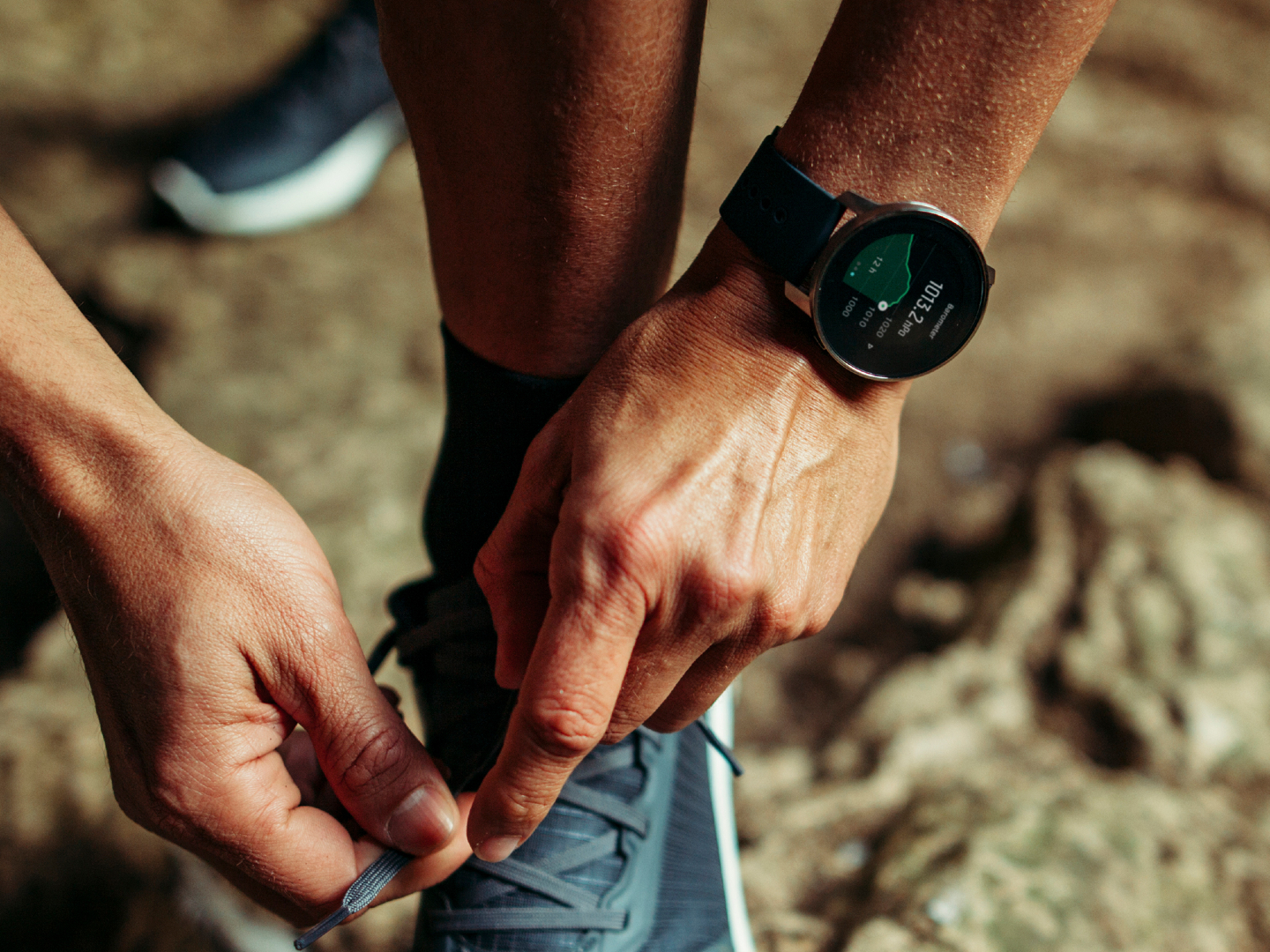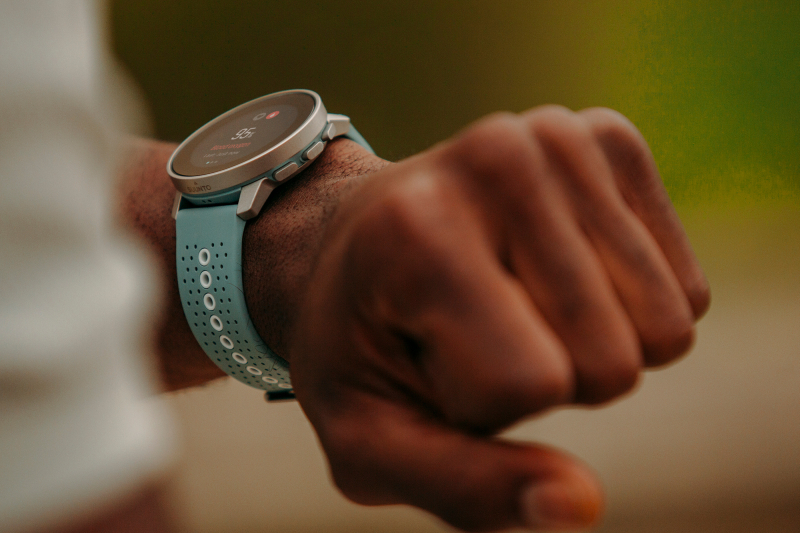
The user-friendly 9 Peak is sleek and has an impressive battery life (Photo: Suunto)
It has been a long lockdown. Way too long. Painfully long. So long that I have, in fact, lost count of how long the third Movement Control Order period has been, what phase we are in, what planet I am on, and who I actually am.
The thrill of reclaiming my former life is finally helping dust the cobwebs off several months of boredom, which I spent browsing sites like Chrono24 and Hodinkee and listening to The Grey Nato’s podcasts. I am sure other watch aficionados behaved likewise when their wives and partners were not paying attention which, in my case, is most of the time.
Besides browsing and secretly purchasing a few timepieces, bikes and whatnot, I also had the luxury (and the need) to get back to my pre-lockdown fitness level. The numerous hours of browsing horological websites, baking sourdough bread and becoming an expert bird-watcher also meant that extra pounds had started to pile on. Worse still, it was getting obvious.
Thankfully, I received a nice surprise when I was asked to review a new watch. Not just any watch, mind you, but the latest fitness watch by Suunto — the 9 Peak. It seemed as if fate had decided to intervene and presented me with the perfect opportunity to get back into some form of fitness routine, all for the sake of putting this timepiece through its paces … or as I later found out, the other way around.
I had been an avid fan of this Finnish brand for many years, having had numerous Suuntos during my years of sailing and triathlons. They are rugged, unemotional, functional and serious machines, much like the Finns themselves. Think of Kimi “The Iceman” Raikkonen as a watch, and you would have an idea of a Suunto: emotionless, steely but extremely efficient.
The unboxing itself was rather uneventful, without frills and fripperies, just the way I like it. The packaging was easy enough for a guy to overcome without ripping a tendon or getting a herniated disc. Everything slipped out nicely and smoothly, and my first impression was similar to seeing a newborn — a sleek new toy, white straps, a lot of brushed aluminium and a nice onyx black screen with the Suunto logo front and centre.
Being a typical dude, I had, by this time, discarded all the accompanying manuals or instructions and started to urgently figure out how to actually set this thing up. Why do things the easy way when you can do it the hard way, right?
While attempting to set it up, I thought, “How hard could this possibly be?” Famous last words for many, it would seem. Surprisingly, setting up the 9 Peak was a breeze. It took me only five hours to figure out that the watch had a wonderfully sensitive and seamless touchscreen and Bluetooth connectivity to my iPhone, which worked on my first attempt after I downloaded the Suunto App. Some watch set-ups are more painful, especially when one dismisses the start-up manual.
The UI/UX for both the app and watch looked impressive and I guess I’m comparing this to other sports watches I have used in the past, as well as the earlier versions of the Suunto operating systems of its previous generations. The interface was clean and rather user-friendly to me, despite not having used a Suunto frequently for many years. I figured that if I could set this up after only five hours unassisted, it would be a breeze for any sensible person who actually reads the user manual.
Now came the time to put this thing through its paces. I decided to stress-test it through various scenarios, working the GPS, battery life, sports modes and health monitors.
My first attempt was a walk through the lovely Tugu Trail in Kuala Lumpur with the family. After all the faff of masks, mosquito sprays, check-ins and ensuring we were safely distanced from the other hikers, I entered the walk using the trail-run mode. This was where things started to fall apart. First, I realised there were several modes within the trek mode itself to choose from — for example, Basic or Mountain — before then entering my weight, height and so on. Maybe if I had only read the manual at the onset, this would have been a breeze.
Some 400m into the walk, I finally managed to hit “Start” and now came the second problem — the GPS needed a clear line of sight to get a signal. I guess this is not uncommon for such watches, although my Garmin is slightly more active in picking up such signals. Eventually, halfway through the walk, I gave up as it was still struggling to find a signal. This, I guess, was no fault of its own as I really should have set it up before entering the trails and not halfway through. Nevertheless, after a good 45 minutes of trudging through the walk with one arm in the sky, we re-emerged back into civilisation only for the feature to finally start at my car. Fail.
My second test the next day was to use it during my regular morning bike ride around hilly Damansara Heights. This would have been a great test of the Herculean efforts required to conquer the hills, starting from my house and with a scheduled pit stop at the neighbourhood café to get a croissant or two. The elevation and health monitoring analytics were extremely rich, perfect for data junkies, although my calorie intake post-ride seemed to have gone haywire — nothing to do with the few croissants I had en route. I must re-evaluate my nutrition strategy; the watch seemed almost faulty.
My penultimate test the day after was a mixture of a morning run followed by a swim. The battery life was impressively holding up despite my thorough efforts of stress-testing all its many features. I must say, by now, I was digging how user-friendly the 9 Peak was, although, aesthetically, I found the smaller screen and sleek lines to be more feminine and closer to a dress watch than, say, for hardy rough and tumble types. Certainly, my preference is for larger watch faces as I have moved from those of 40mm to a 42.2mm and sometimes even the 47s for my dive watches. Perhaps it is par for the course due to deteriorating eyesight as a consequence of ageing. Who knows?
Design-wise, I think the Suunto 9 Peak was made for the urban latte-drinking demographic who run-walk from café to café while decked out in fashionable swag, which is not a bad thing in my book, but I digress. Back to the watch. Again, the swim and run features worked extremely well, but also required initial calibration for first-time use. Unsurprisingly, I still had not learnt my lesson and hence only clocked half my sessions on Strava, which is extremely annoying for sports and data junkies. Nothing a manual input could not fix however, plus a few extra clicks to be safe.
My final test was a CrossFit session comprising boxer-style skipping and weights. During the lockdown, I started doing a lot of this, which I found enjoyable. I could not fathom how a watch could pick up data from such sessions, and realised that after doing 1,500 skips and nine reps of kettlebell, I had only burned a miserable 132 calories. The reading must have been obviously inaccurate.
After a week of putting the Suunto 9 Peak through its paces, I did realise one thing: the watch was great, my fitness not so.

